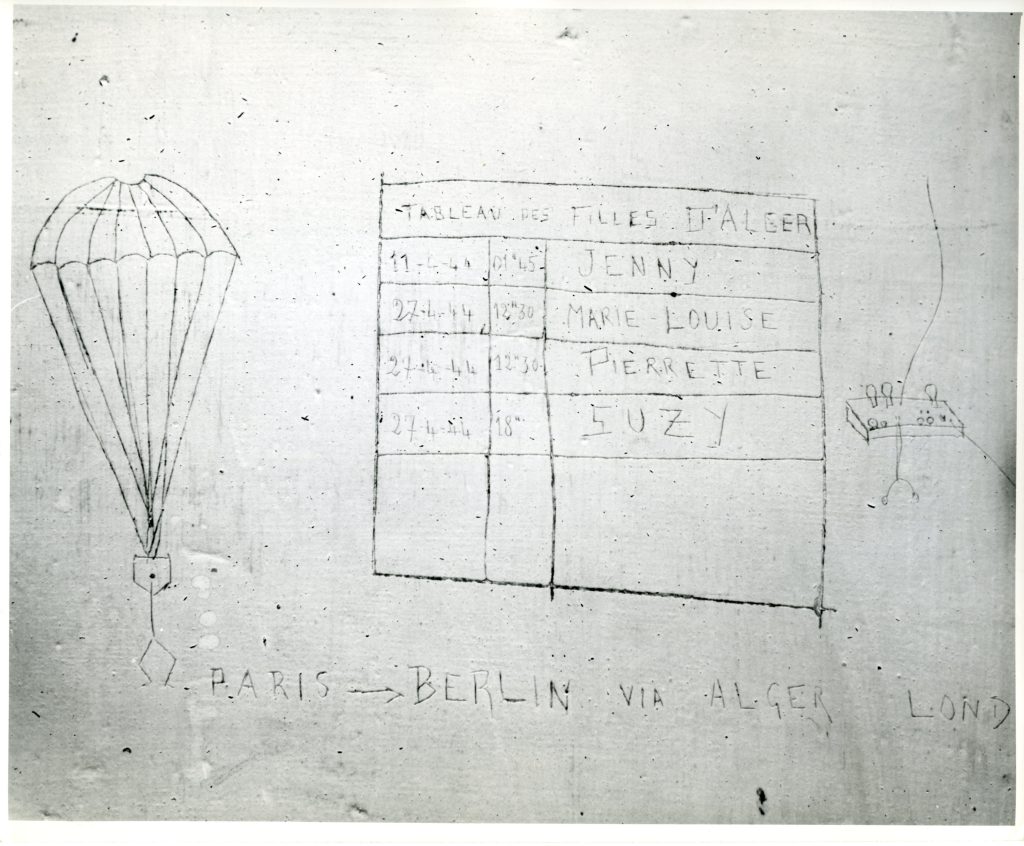PARACHUTÉES, 2022
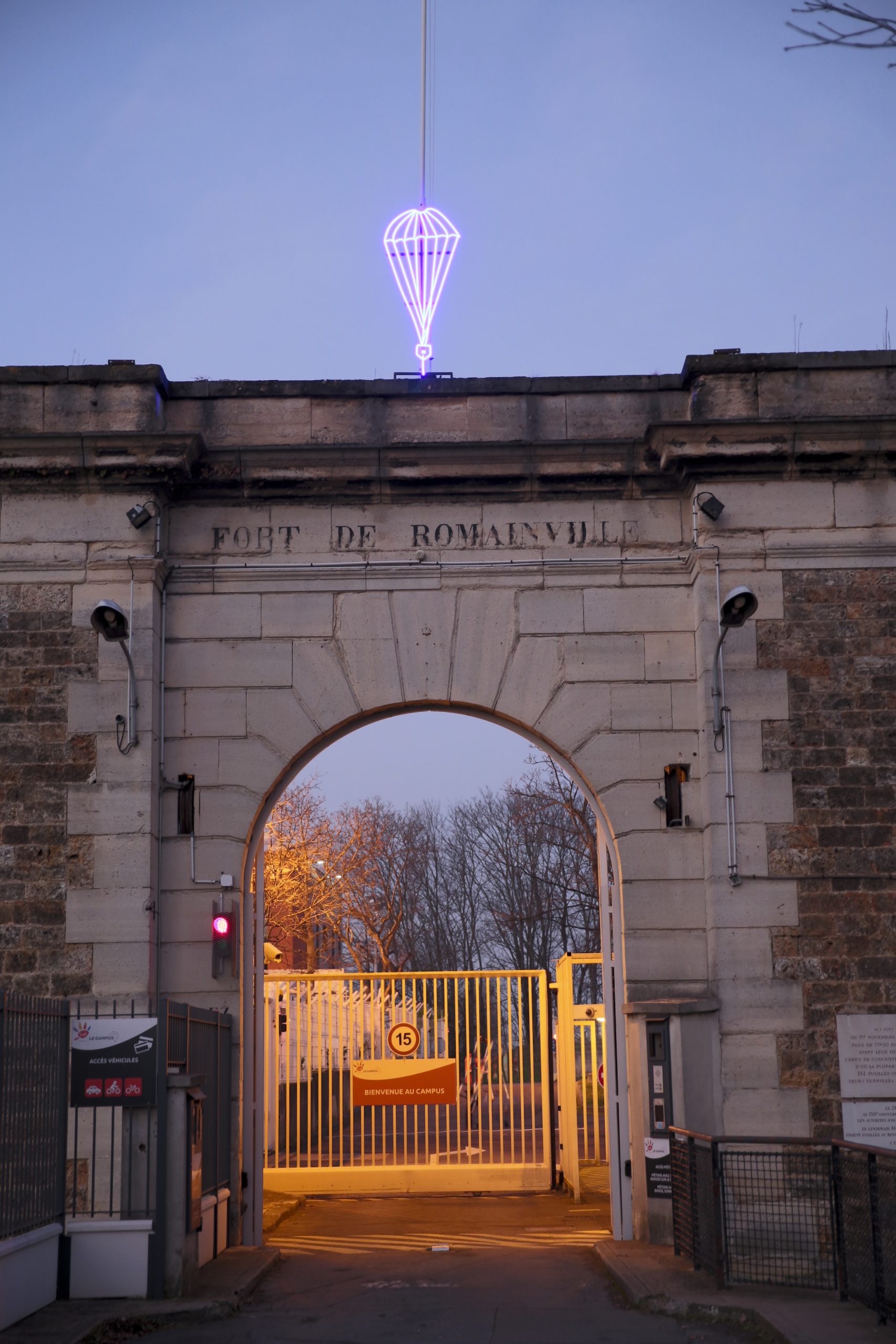
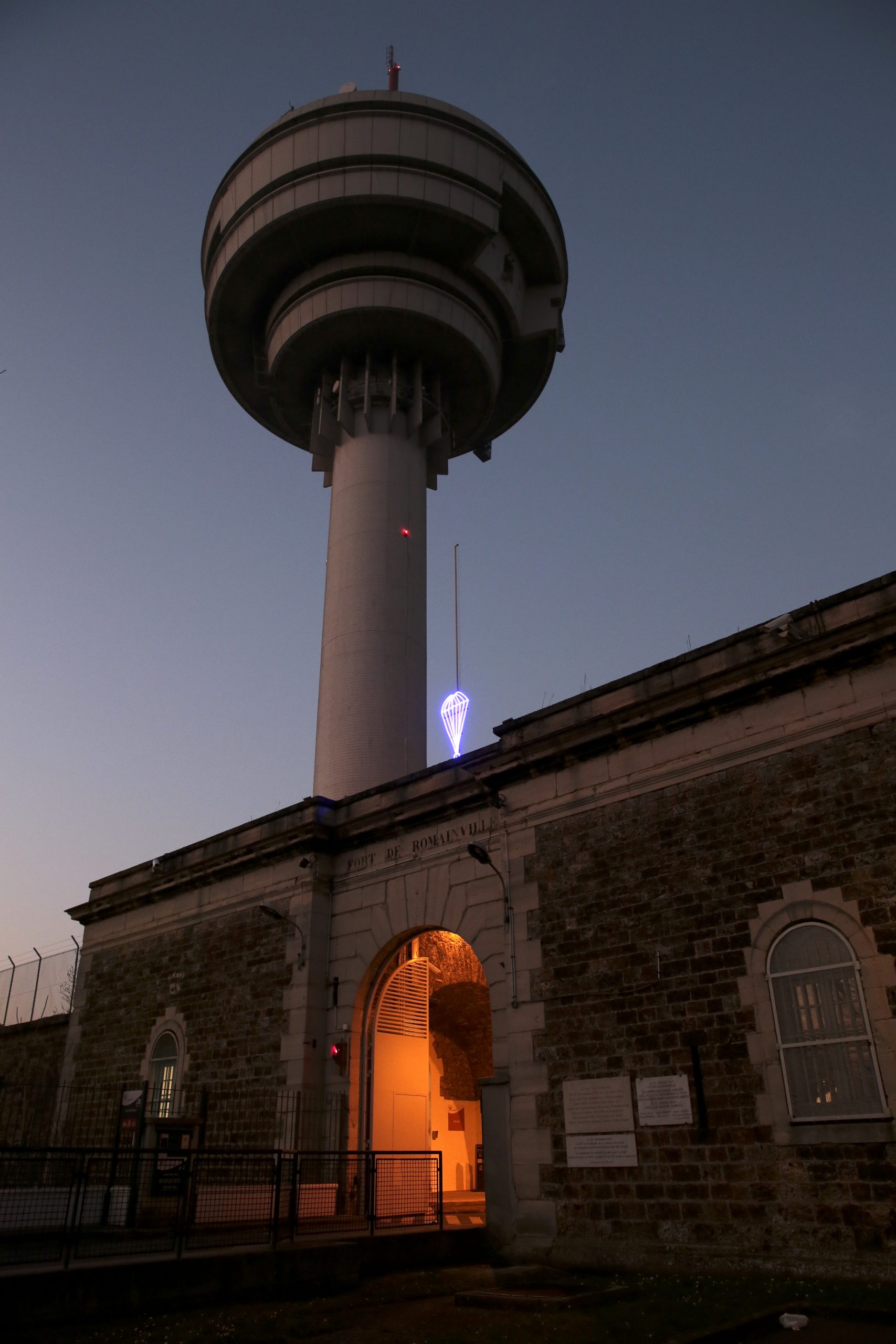
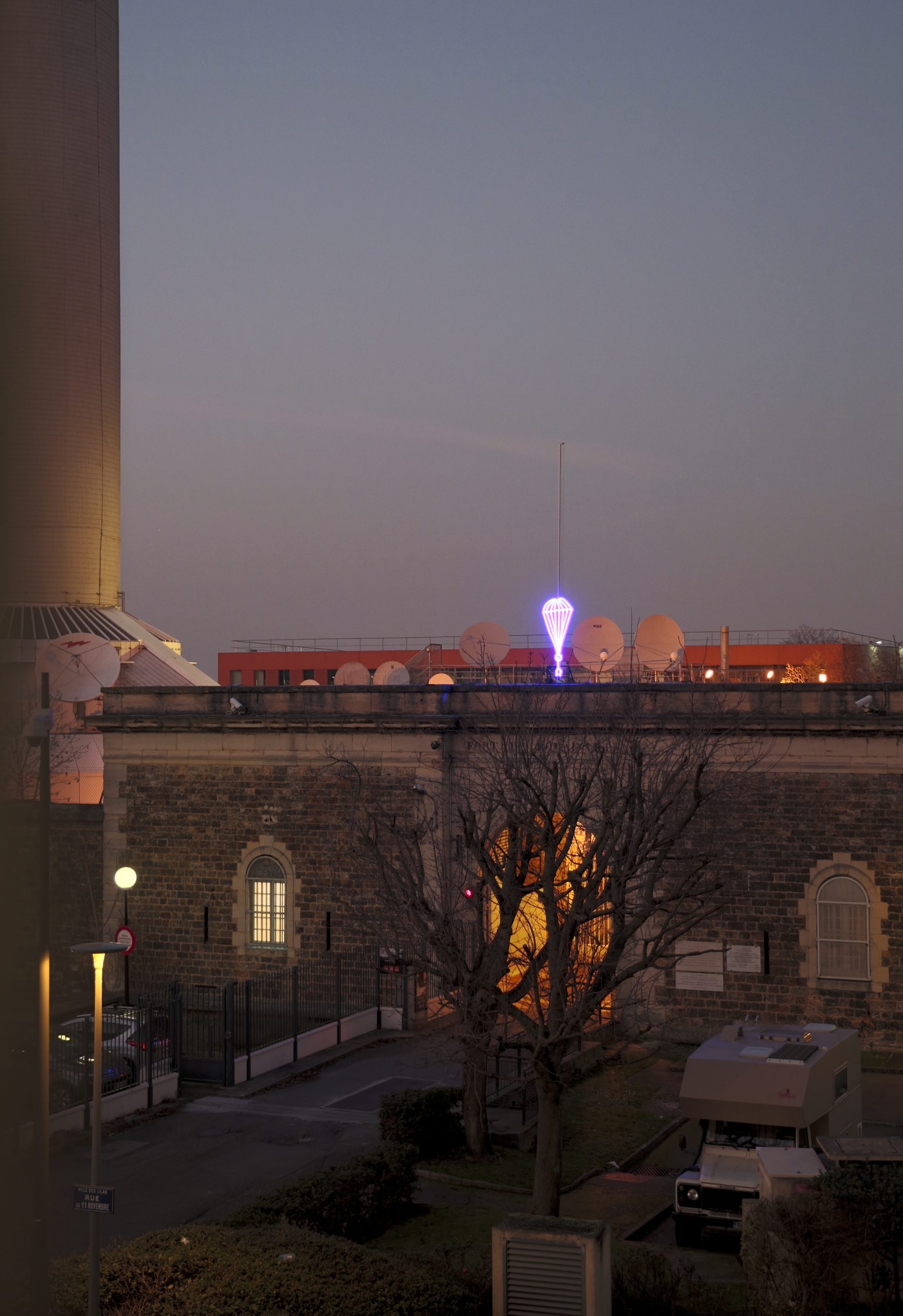
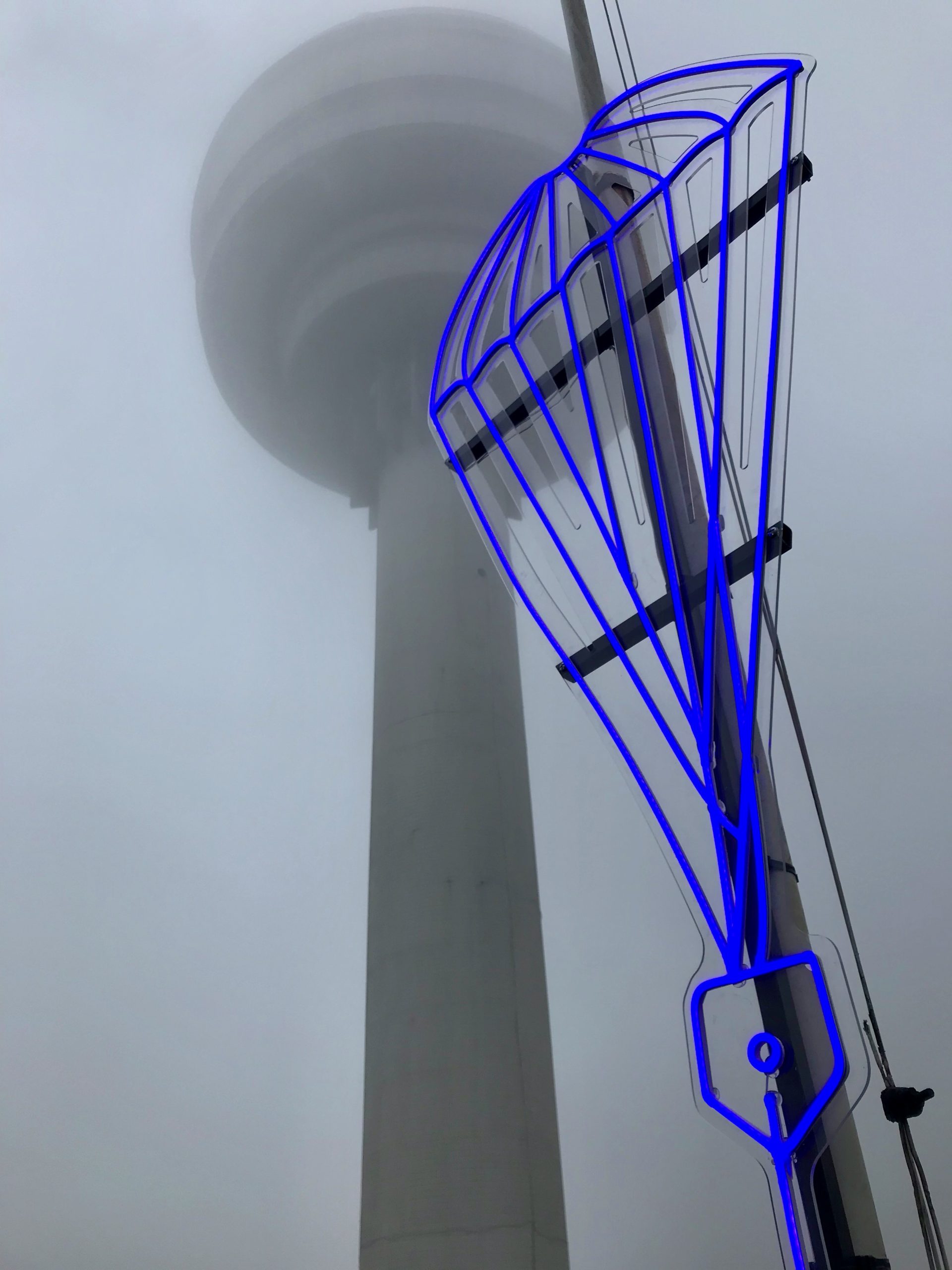
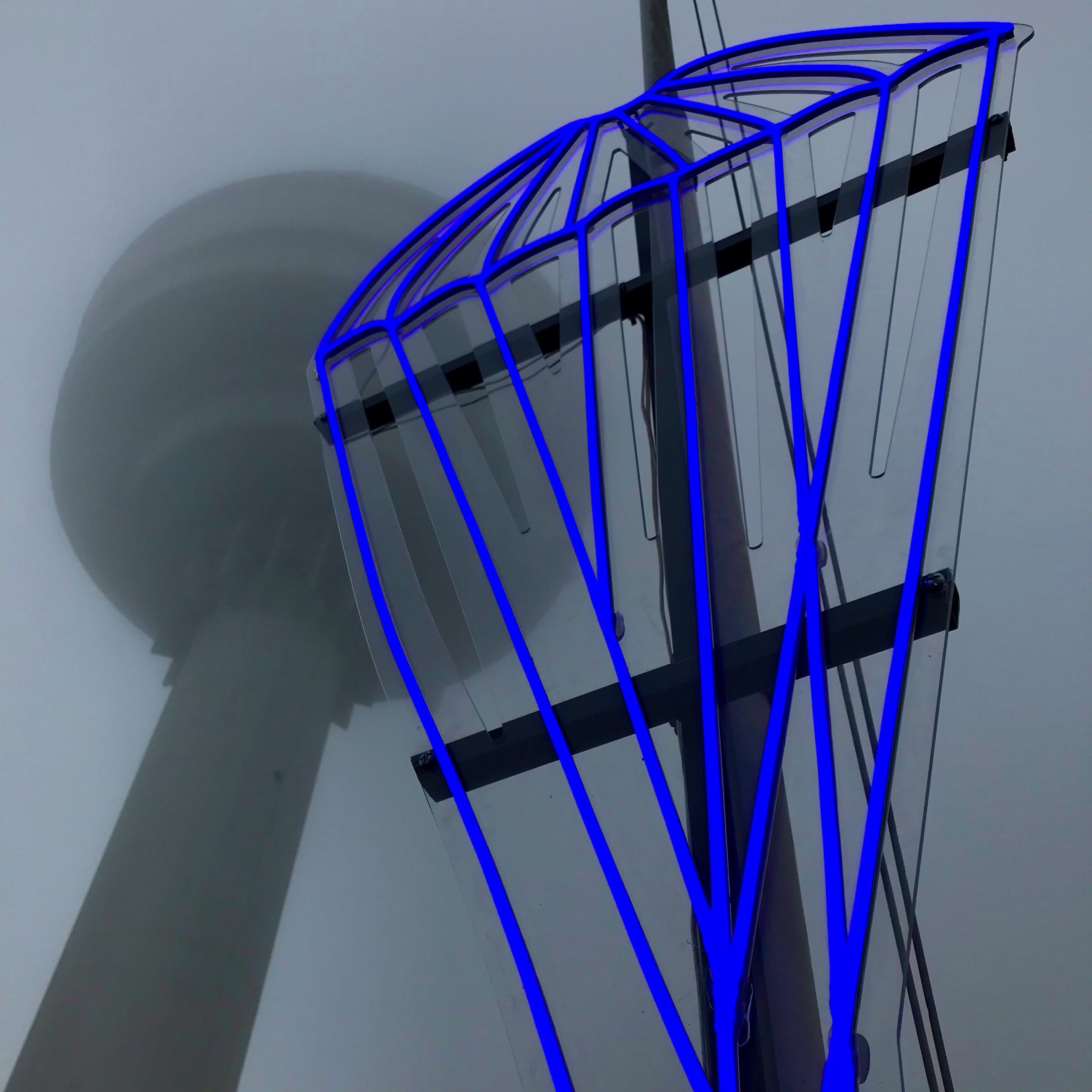

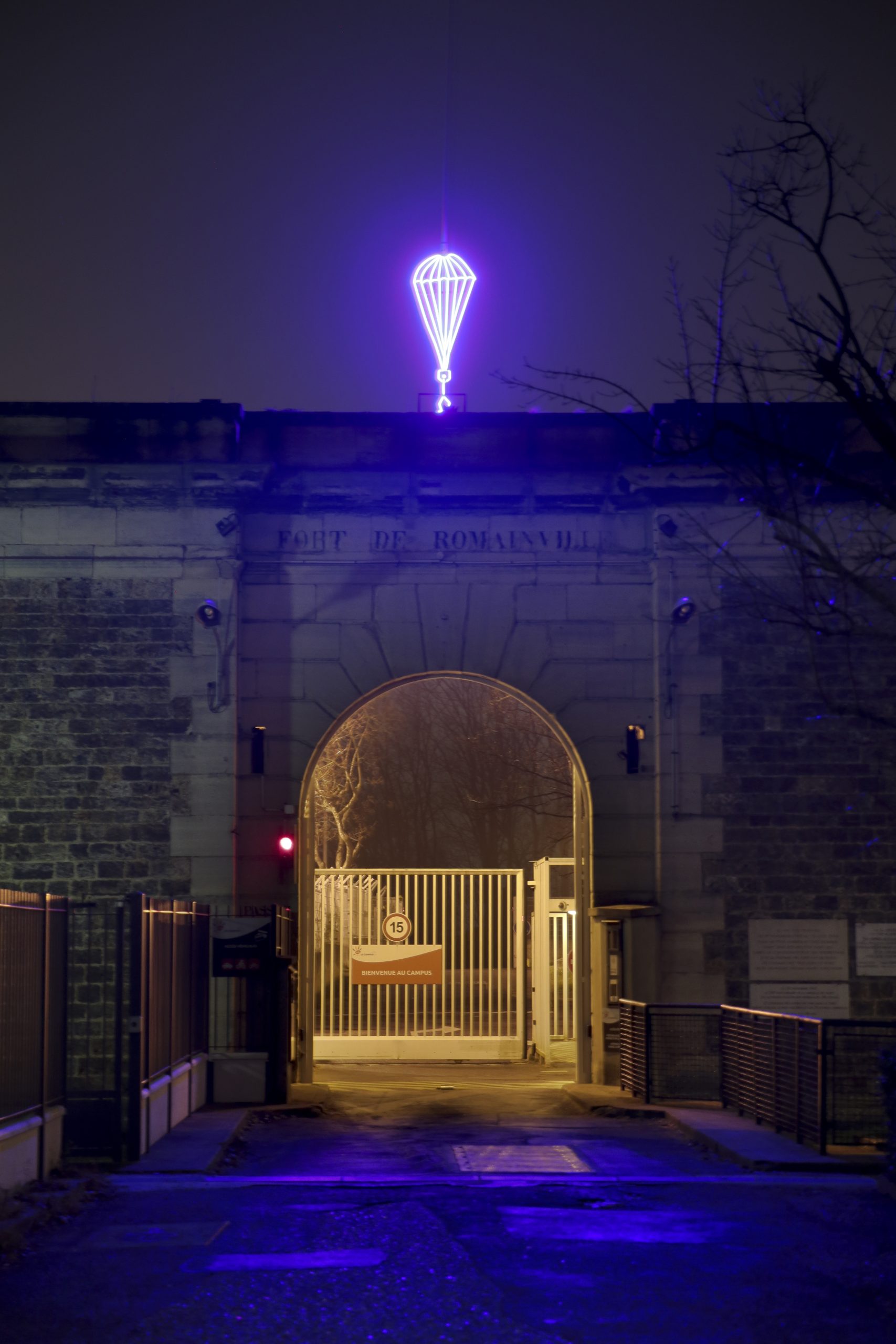
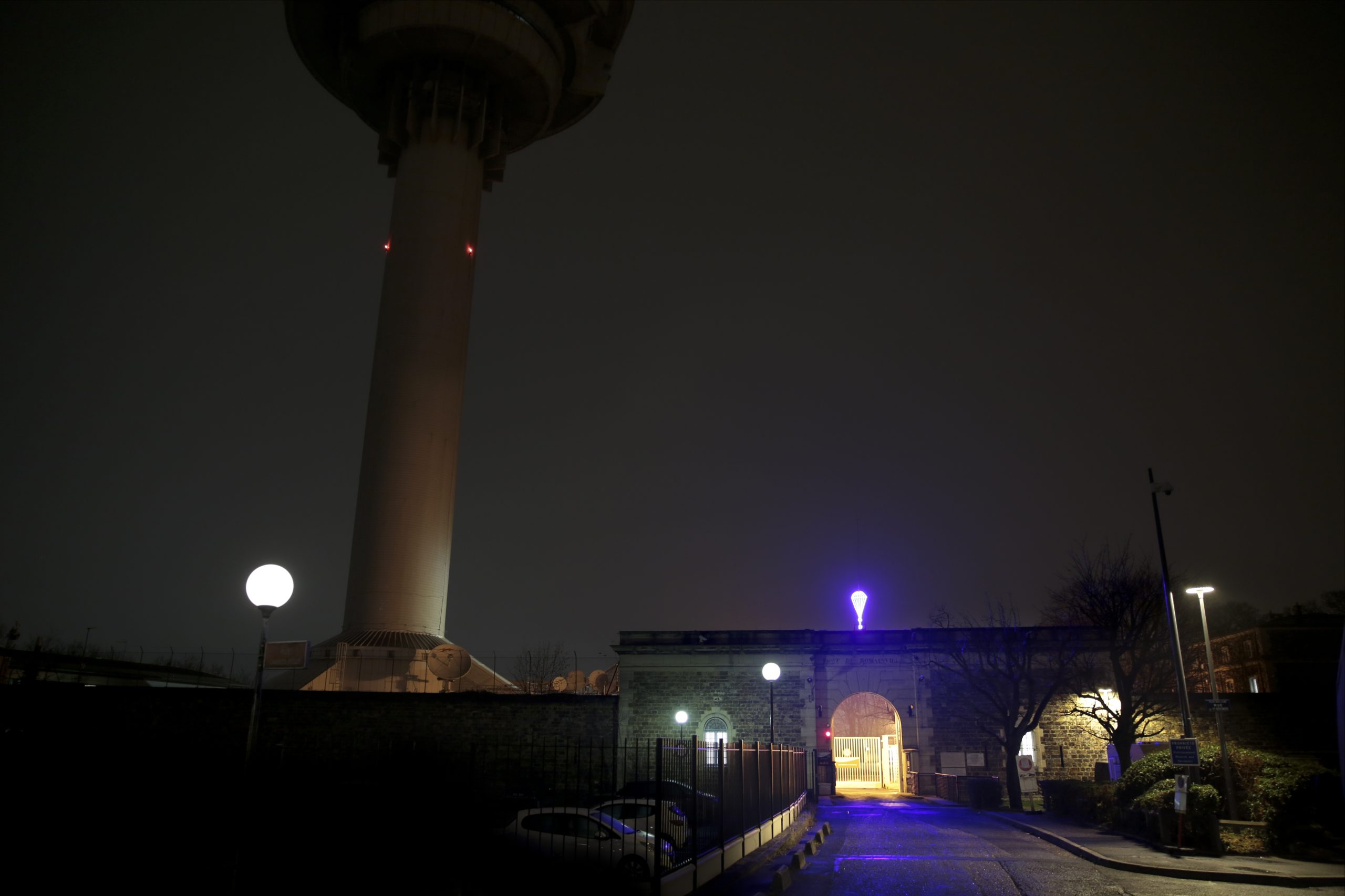
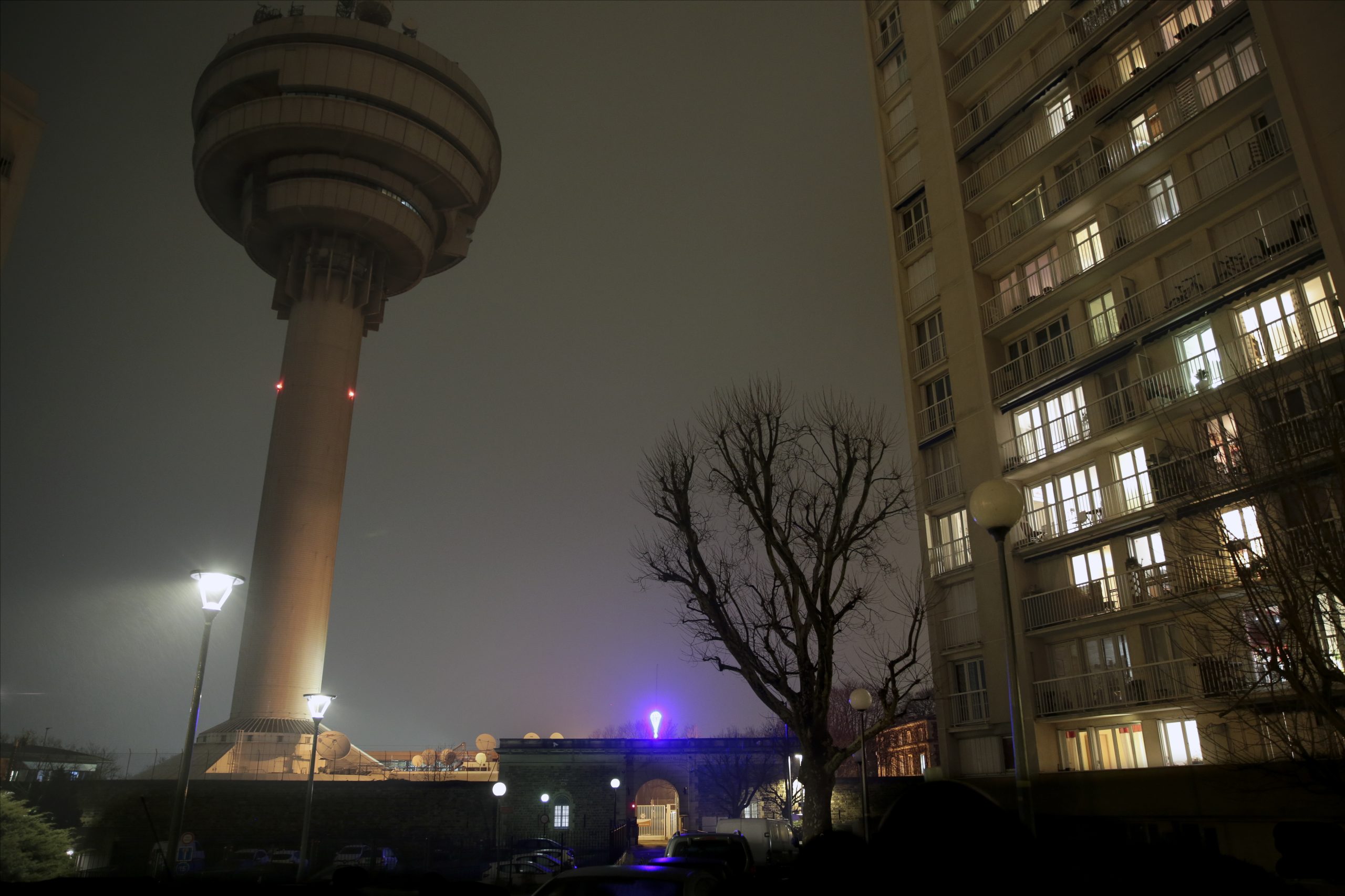
Description
Parachutées is exposed above the entrance of the Fort Romainville. The history of the Fort, a 19th century* building transformed during the Nazi occupation into an internment camp from which hundreds of women resistants were deported during the convoy of 31,000, immediately appealed to me. The entrance is very symbolic when one thinks of the gates of concentration camps like Auschwitz with the inscription “Arbeit Macht Frei”. While reading the studies on the graffiti of resistance fighters imprisoned during the Second World War I came across a drawing that made a deep impression on me – a paratrooper drawn by four resistance fighters in a Gestapo jail on avenue Foch in Paris. The motif they have chosen evokes the idea of being dropped somewhere without knowing why. I therefore chose to illuminate this drawing on the Fort Romainville: from a historical testimony, it becomes the luminous symbol of these trajectories brought together by the wind of history. This graffiti no longer exists, we remember it only thanks to an image taken immediately after the war. It thus becomes a kind of monument, in its Latin etymology, monere “to remember”. A reminder of the fragility of these important traces that allow us not to forget this story.
* The enclosure of Fort de Romainville now houses the technology campus of the TDF group.
FOCUS: The Graffiti Of Algiers’ Girls
Maja Bajevic’s work Parachutées takes up the drawing drawn in one of the cells of the Gestapo headquarters at 82-84 avenue Foch in Paris. In the book “Graffiti de resistants sur les murs du Fort de Romainville 1940-1944” (Thomas Fontaine, Sylvie Zaidman, Joël Clesse, 2012) the authors explain that it is a graffiti “left by four women, members of the BCRA , the “secret services of General de Gaulle”, parachuted in early April 1944 in the Dordogne. Quickly discovered and arrested, Suzy Boitte, Marie-Louise Cloarec, Jenny Djendi and Pierette Louin were first interned on Avenue Foch before being transferred to Fresnes prison. They trace on the wall of the cell. 43 a “table of the girls of Algiers”, divided into three parts in the left column, four dates, in those on the right their four first names, and in the center four timetables”. During an interview, the historian Thomas Fontaine says: “These women were considered so dangerous that they were murdered in 1945 in Germany. This type of execution is very rare, there are only 200, 300 resistants who were executed at the very end of the war. This testifies to their membership in the secrete service and their importance for the Resistance. This graffiti has since disappeared and we only have this photograph which is a exceptional testimony”
